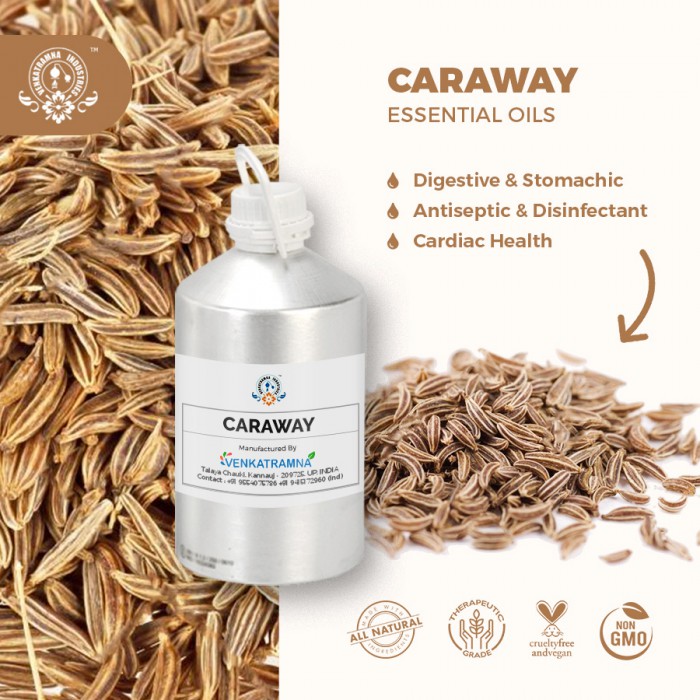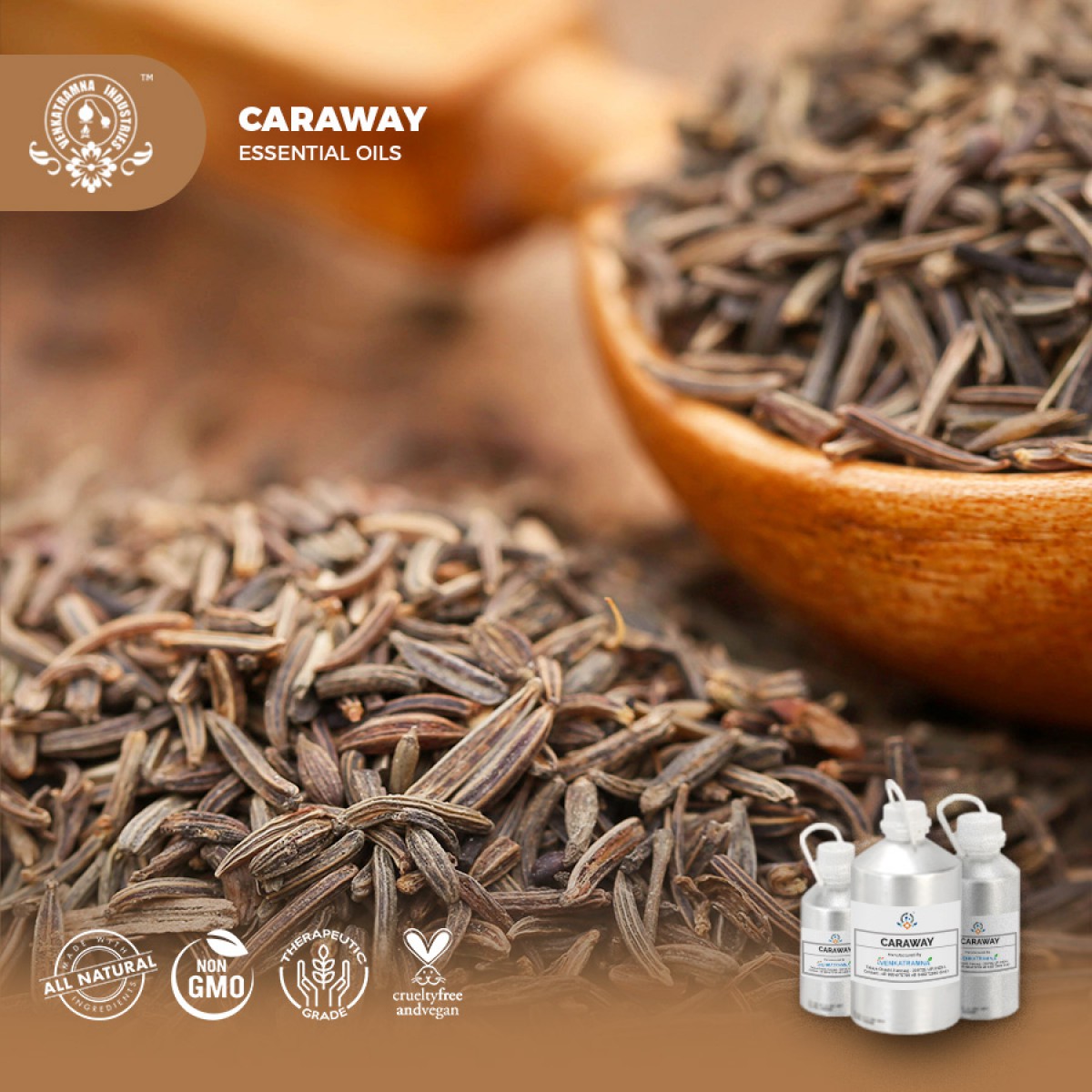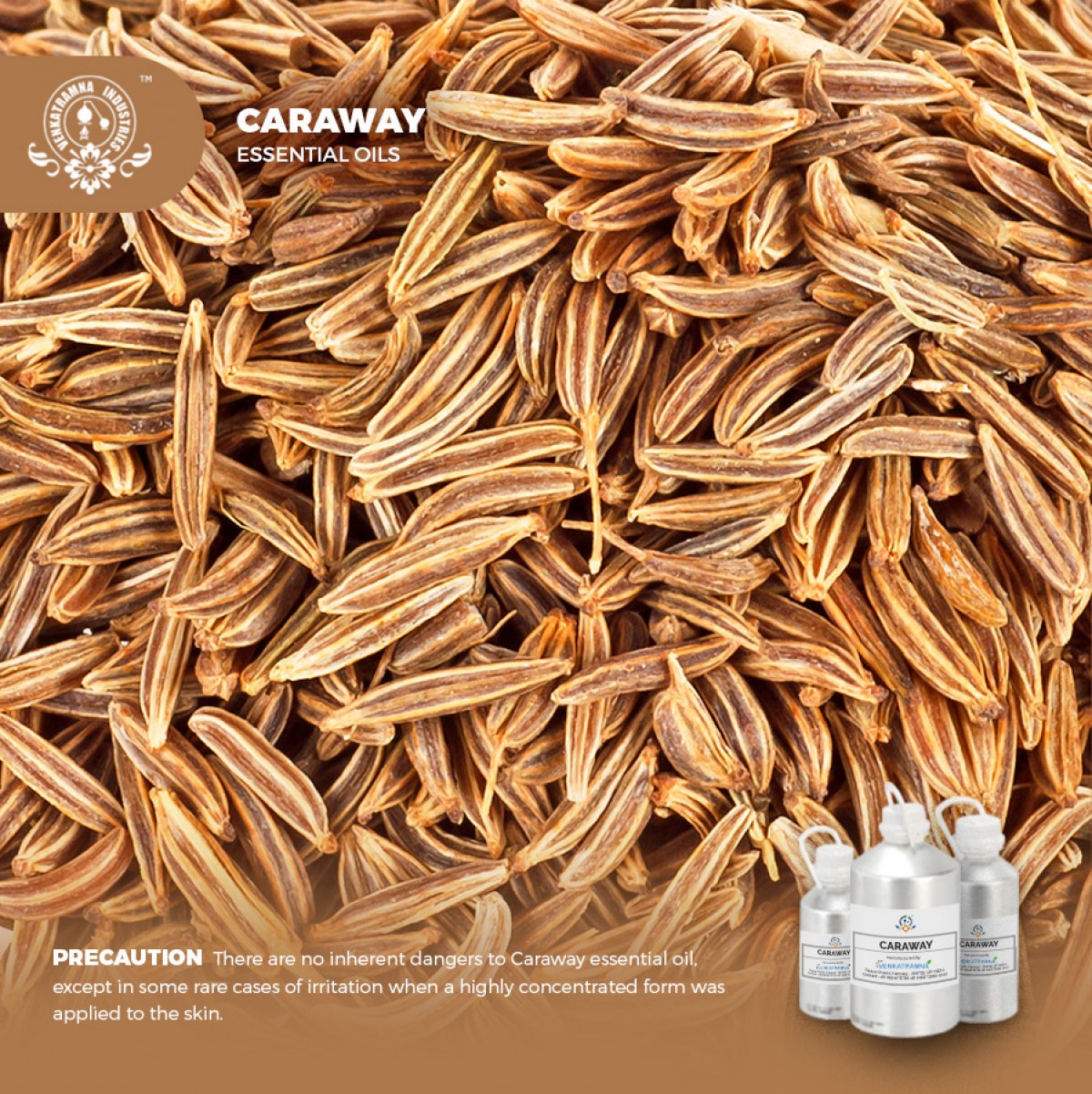Botanical Name: Carum carvi L Common name: Meadow cumin, Jangi dhania, Jeerka Read More
|
Botanical
Name: |
Carum carvi L |
|
Common name: |
Meadow cumin, Jangi dhania, Jeerka |
|
Plant family: |
Apiaceae |
|
Genus: |
Carum |
|
Appearance/Color: |
A thin, clear, colorless to pale yellow liquid. |
|
Odor: |
A middle note with a strong aroma, caraway essential oil has a
sweet spicy odor with a slight peppery smell. |
|
Blends With: |
Basil, chamomile, coriander, frankincense, ginger,
lavender, and orange. |
|
Origin |
Egypt |
Spices are an important bio-nutrients
for both food ingredients and nutritional supplements. From ancient times,
spices have been used as food additives to enhance the taste and be flavor of
food. Apart from these uses, spices also have numerous medicinal properties and
used to treat several disorders that form an important part of the Ayurvedic
Pharmacopoeia (Indian System of Medicine). Spices have increasingly larger role
to play in Indian recipes as the bactericidal, bacteriostatic, fungistatic,
antifertility, anti-helminthic and other medicinal properties and believed to
aid digestion. In the traditional Indian system of medicine, more than a few
spices and herbs have hold and possess several medicinal properties such as
antithrombotic, anti-atherosclerotic, hypolipidemic, anti-inflammatory,
anti-aggregatory, eicosanoid inhibitor.
Caraway seeds from the plant
Carum carvi are known as kümmel in German. They are crescent-shaped, long, and
have five pale ridges. Caraway is more common in the German kitchen than cumin
and is typically used whole, not ground. It has an anise-like flavor and aroma
that is popular in breads (especially rye breads), cheeses, sauerkraut, and
root vegetables. It also can be found in desserts, liquors, and as an
ingredient in beauty products, folk medicine, and breath fresheners.
Cumin is sometimes confused with caraway. Cumin is hotter to the taste, lighter in color, and the seeds are larger than those of caraway. Cumin's distinctive flavor is strong and has a warm aroma due to its essential oil content.
DISCLAIMER
The complete range of conditions
or methods of use are beyond our control therefore we do not assume any
responsibility and expressly disclaim any liability for any use of this
product. Information contained herein is believed to be true and accurate however,
all statements or suggestions are made without warranty, expressed or implied,
regarding accuracy of the information, the hazards connected with the use of
the material or the results to be obtained from the use thereof. Compliance
with all applicable federal, state, and local laws and local regulations
remains the responsibility of the user.
The FDA has not evaluated the
statements on this website. No claims are made by Venkatramna Industries as to
the medicinal value of any products from vriaroma.com or by us. The information
presented here is for educating our customers about the traditional uses of
essential oils and is not intended to diagnose, treat, cure, or prevent any
disease. You are responsible for understanding the safe application of these products.
If you have any questions, please call or email us for further information.
As per NAHA guidelines, New Directions Aromatics
(NDA) does not recommend the ingestion of essential oils. It is imperative to
consult a medical practitioner before using Essential Oils for therapeutic
purposes. Pregnant and nursing women and those taking prescription drugs are
especially advised not to use this product without the medical advice of a
physician. The oil should always be stored in an area that is inaccessible to
children, especially those under the age of 7.
It is among the widely used
spices which are used as crude or essence in various food products for its
pleasant flavor and anti-spoilage properties. The caraway seeds contain
essential oils rich in nutraceutical compounds used as food supplements and
plant-based medicine. Experimental evidences show that the essential oils
(essence) and active ingredients such as carvone possess antioxidant and
antimicrobial properties. Evidence shows that the essential oils are more
effective when used as mixture suggesting the additive effects of the oil
components.
Caraway Essential Oil in
Pharma
It is used as carminative for
stomachache and to induce diuresis. Its seed has also been reported to give
relief in patients suffering from lumbago, rheumatism, toothache, diarrhea,
epilepsy, diabetes mellitus, and hypertension. Caraway fruits may contain 3% to
7% essential oil. The aroma of the oil is mostly dominated by carvone (50 to
85%) and limonene (20 to 30%); the other components carveol, dihydrocarveol,
?- and ?-pinene, sabinene and perillyl alcohol are of much minor importance.
It is traditionally used as a
spice in foods and beverages and as an alternative herbal medicine for GI
ailments including dyspepsia, and various spasmodic conditions, bloating,
diarrhea and in flatulent colic. It is diuretic and expectorant and used for
increasing maternal milk and dysmenorrhea. Caraway has both anti-hyperglycemic
and anti-hyperlipidemic activities in STZ-induced diabetic rats. Its volatile
oil probably has a protective role in kidney tissue against oxidative injury in
advanced stages of sepsis and it is hepatoprotective against carbon
tetrachloride-induced liver toxicity in rats.
Essence of Caraway Essential
Oil
Carum carvi, also known as black
caraway and cumin seeds are widely used as a spice for culinary purposes and
for flavoring confectionaries (such as bread, biscuits, cakes, and candies),
cheese, curries, meat products, sausages
COMMON USAGE
·
Anti-histaminic
·
Antiseptic and disinfectant
·
Cardiac health
·
Antispasmodic
·
Carminative
·
Digestive and stomachic
·
Diuretic
·
Emmenagogue
·
Expectorant
·
Aperitif
·
Stimulant
·
Tonic
·
Insecticide and vermifuge
Ingredients:
|
S.No |
Key Constituents |
Strength (%) |
|
1 |
p-carvone |
47.3-59.5 |
|
2 |
p-limonene |
36.9-48.8 |
|
3 |
b-myrcene |
0.2-1.0 |
TOXICOLOGICAL
INFORMATION
·
Hazards: skin sensitization if oxidized.
·
Cautions: old or oxidized oils should be
avoided.
Organ-specific
effects
·
Adverse skin reactions
Undiluted caraway
oil was irritating to rabbits but was not irritating to mice or pigs; tested at
4% on 25 volunteers it was neither irritating nor sensitizing. Low-level
phototoxic effects have been found for caraway oil but is are not considered
significant. Autoxidation products of (p)-limonene can cause skin
sensitization.
Systemic
effects
·
Acute toxicity: Caraway oil acute oral
LD50 in rats 3.5 mL/kg; acute dermal LD50 in rabbits 1.78 g/kg. A 1-month-old
rabbit was given 60 drops of caraway oil over a few minutes. It died after
being seized with convulsions.
·
Carcinogenic/anticarcinogenic potential:
whether supplemented in the diet or applied to the skin, caraway oil inhibited
DMBA-induced and croton oil-induced skin tumors in female mice and caused
regression in established papilloma’s. Caraway oil significantly induced
glutathione s-transferase activity in mouse tissues. Dietary caraway oil at
0.01% or 0.1% significantly inhibited the development of pre-malignant colon
cancer lesions in rats, partly through maintaining healthy level of hepatic
glutathione and CYP1A1. (p)-carvone is not a rodent carcinogen, and both
carvone and (p)-limonene display anticarcinogenic activity.
·
Skin corrosion / irritation: Causes skin
irritation.
·
Serious eye damage / irritation: Direct
contact with eyes may cause temporary irritation.
·
Respiratory sensitization: Not available.
·
Skin sensitization: May cause an allergic
skin reaction.
·
Germ Cell Mutagenicity: No data available
to indicate product or any components present at greater than 0.1% are
mutagenic or geno-toxic. Carcinogenicity OSHA Specifically Regulated Substances
(29 CFR 1910.1001-1050) Not listed.
·
Reproductive toxicity: This product is
not expected to cause reproductive or developmental effects.
·
STOT-single exposure: No additional data
available.
·
STOT-repeated exposure: No additional
data available.
·
Aspiration hazard: May be fatal if
swallowed and enters airways.
·
Photo-toxicity: No additional data
available.
ECOLOGICAL INFORMATION
Do not allow product to enter
streams, sewers or other waterways.





 MSDS-Caraway.pdf
MSDS-Caraway.pdf





Hill beckie - 28 May 2022
Not much